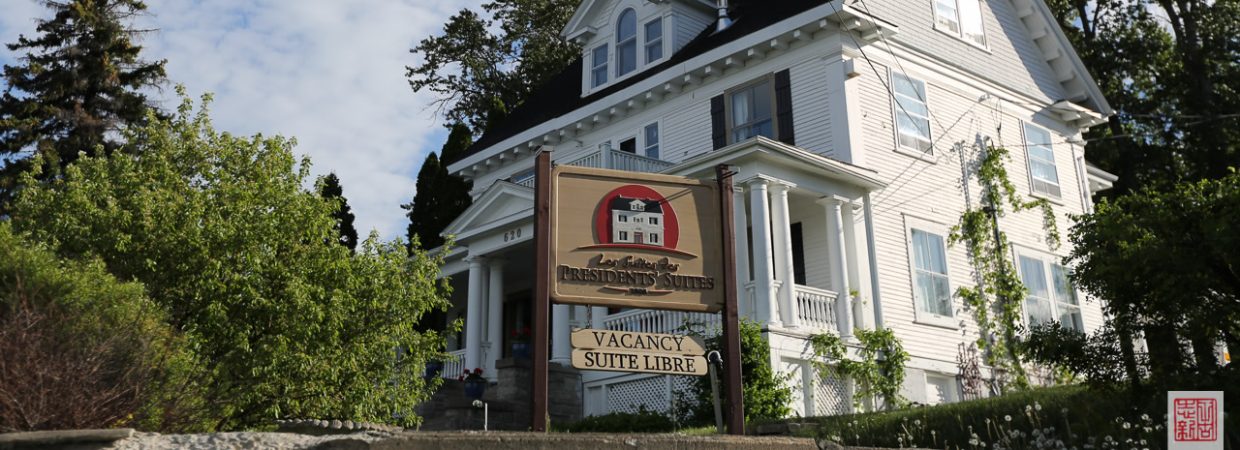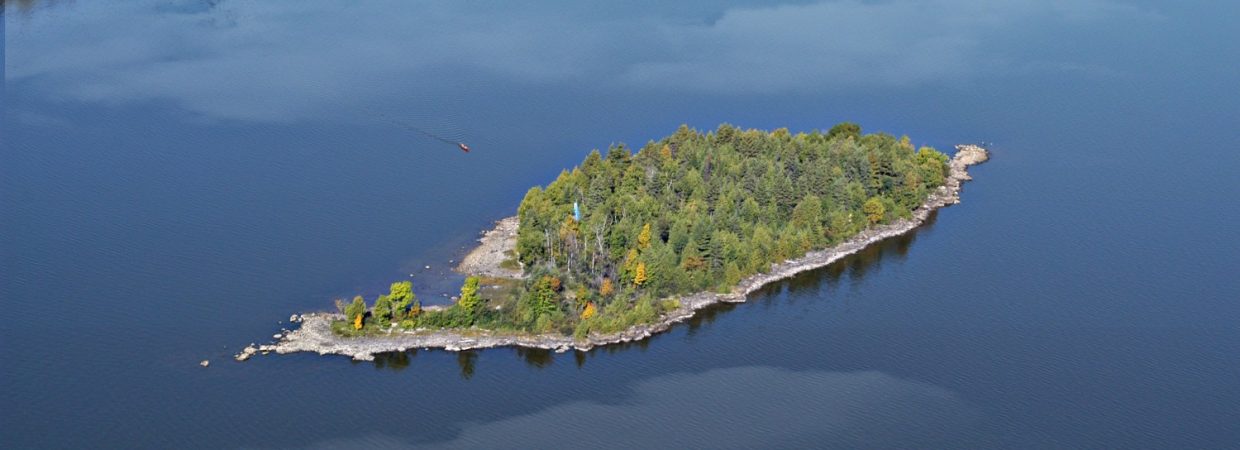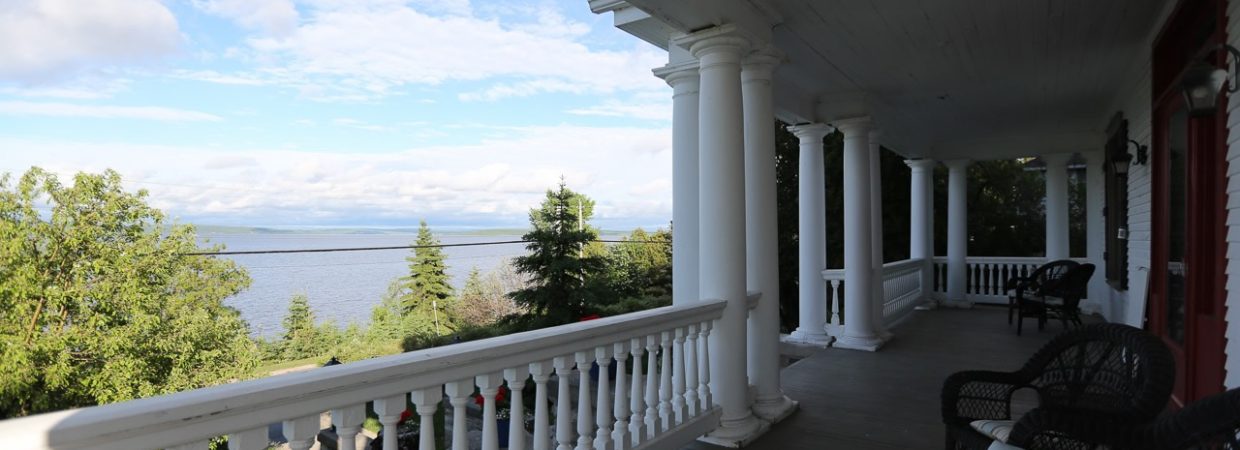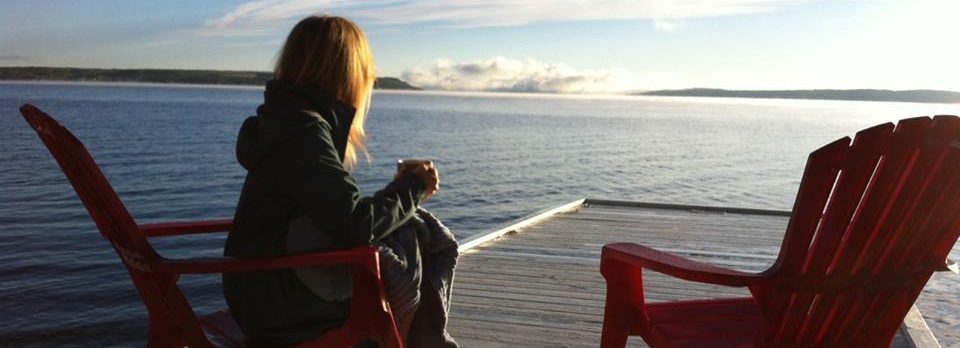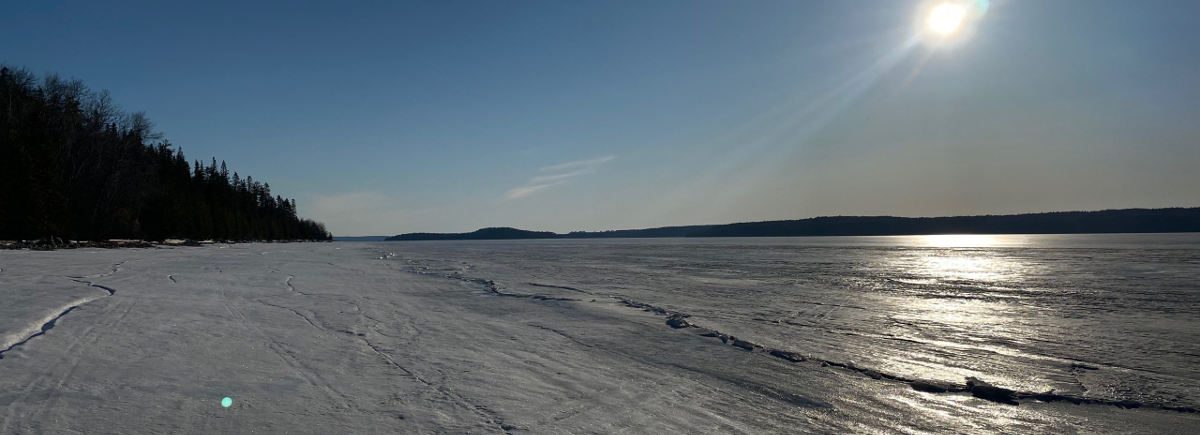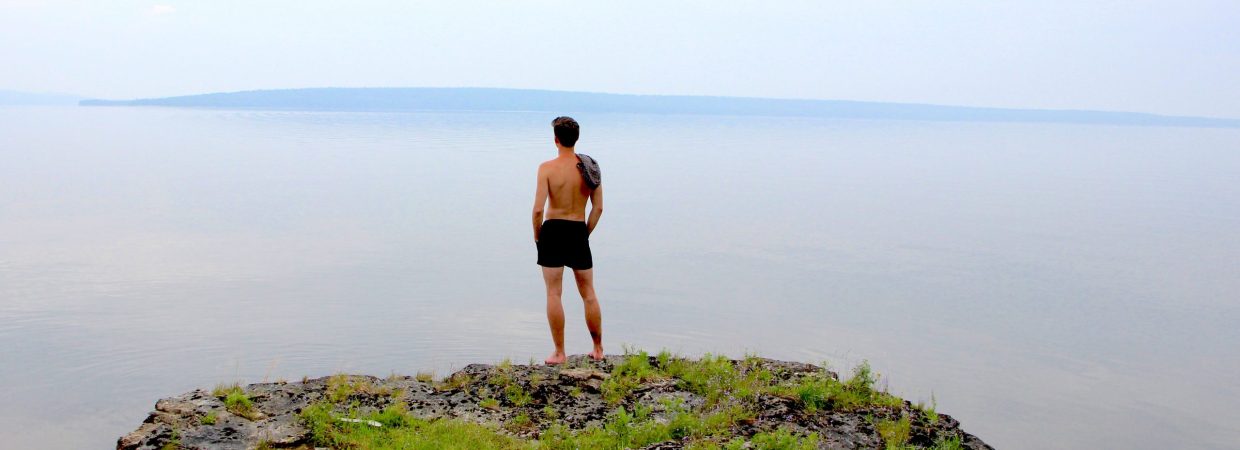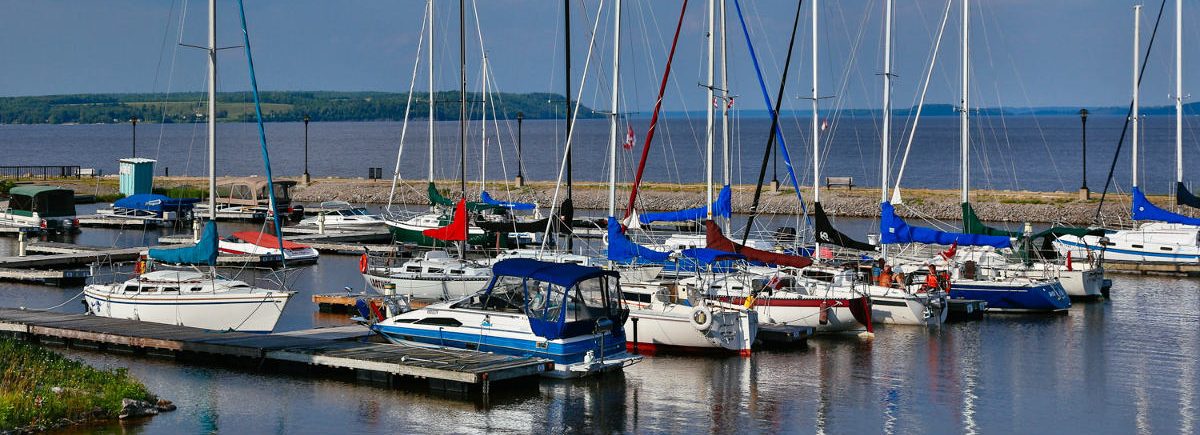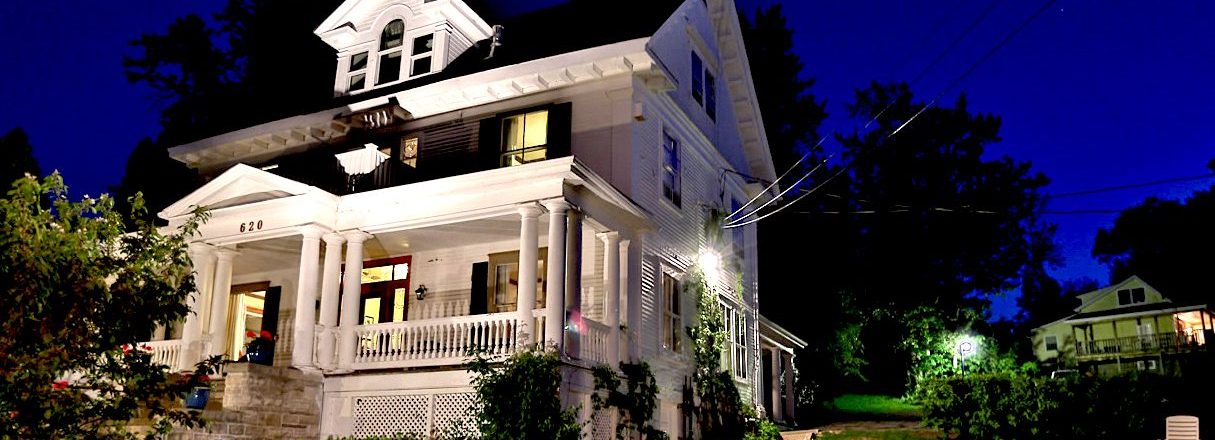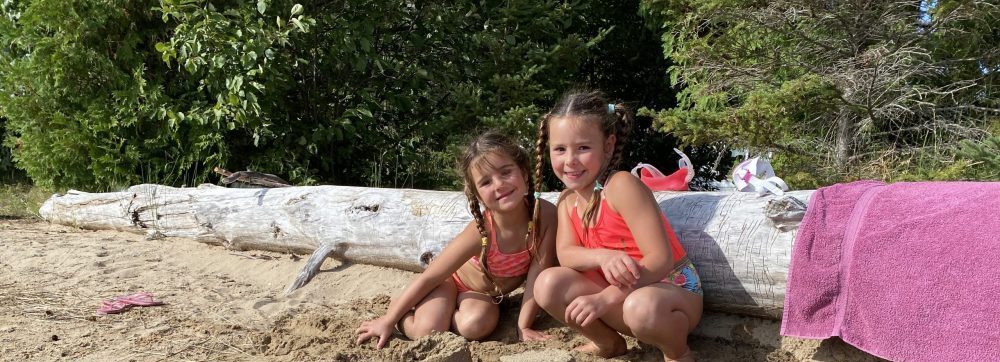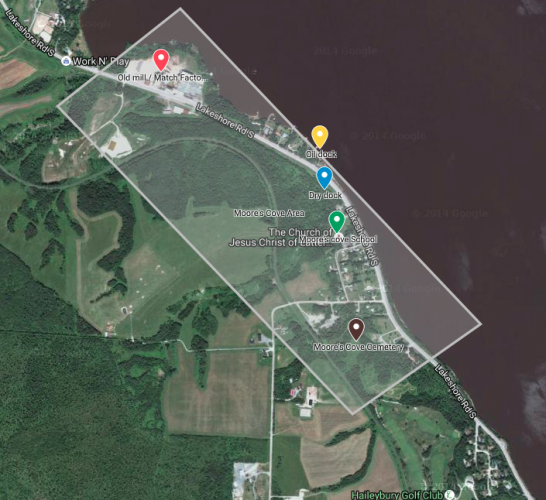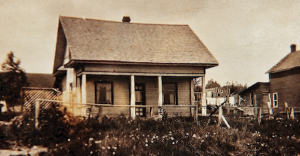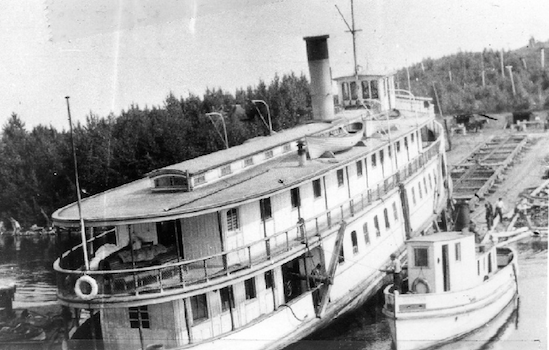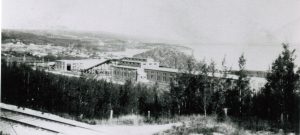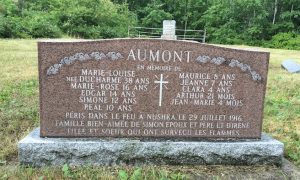Moore’s Cove, Lest We Forget
Most people today would not remember much about Moore’s Cove, a community that used to exist just north of Haileybury. The community was spread out over a narrow stretch of land between the lake and the railroad – over a distance of a few kilometres – between the edge of the Haileybury golf course and Dickson Creek (the old mill). At one time there was a mill, a school, a shipyard. The cemetery is still there.
Moore’s Cove’s First Settlers
Moore’s Cove was named after James Moore, who settled the area just north of Haileybury during the late 1880’s. Like several others, he traveled north to seek his fortune. Moore lived in a shack he built, and within a few years had cleared enough land for farming. He died of blood poisoning in 1917 in the Haileybury Hospital. Several families, including the Jenkins, Greers, and Hancocks, settled in Moore’s Cove in the early 1900’s. After purchasing some of the Moore’s Cove acreage, Sam Briden contracted Homer Sutcliffe to survey a subdivision that lined both sides of a street, to which he gave his middle name of Dutton.
The School
By 1914, the population of Moore’s Cove was large enough that a school was needed to educate all the children. Bob Jenkins was appointed Secretary of the school board, and immediately set about raising funds for the building. A large one-room school house was built and furnished, with enough desks for 40 students. Thus, the children who lived in Moore’s Cove would no longer have to rush for the morning trolley car to Haileybury. The first teacher was Miss Mabel Powell from the Barrie area, who lived with the Jenkins family in their small home. She was described as a “fine girl, a good teacher, and a devout Catholic”. Unfortunately, the school was officially closed early 1960s due to lack of attendance and cuts in school board funding. From that point on, the children of Moore’s Cove had to attend school in Haileybury. The school was situated at the actual site of the Church of Jesus Christ of Latter-day Saints, located on Edward Street. The Church building used to be the Knights of Columbus Hall.
The Shipyard
About a third of the way between the Dickson Creek mill and the Haileybury golf course was the Moore’s Cove shipyard. It’s difficult to believe that Moore’s Cove once had a dry dock (repair dock) and an oil dock, but at one time, before the railway and the highway, Lake Temiskaming was the main transportation route for the region, with several famous steamships like the Meteor, Temiskaming, Clyde, Jubilee, and several others. The shipyard was a facility where steamer lines could repair their ships or bring them out of the water for winter. They were pulled up on rails using a cable that was wound around a huge wooden spool. One or two teams of horses turned the spool.
The Mill
At Dickson Creek, right at the boundary of Moore’s Cove, the remnants of a partly dismantled industrial facility can still be seen. Most people refer to the site as the Rexwood/Uniboard particle board plant, which shut down a few years back due to a drop in the demand of this wood product. But this industrial site dates back to almost a century ago. At the beginning, it was a small pulpwood mill. Afterward, the Canadian Splint and Lumber Company of Pembroke refitted the old pulp mill building to build matchsticks. It started operating in 1944. There was also a limestone quarry west of the splint factory.
The Cemetery
We should not forget Moore’s Cove cemetery. When the Roman Catholic Church was established in Haileybury, they situated their cemetery at Moore’s Cove, which provided them with close proximity to the railway tracks and a beautiful view of Lake Temiskaming. Due to its location and the fact that it was the only consecrated Roman Catholic Cemetery in Northern Ontario at the time, victims of both the Porcupine Fire of 1911 and the Matheson Fire of 1916 were brought to Haileybury by rail for burial in consecrated ground. The Matheson Fire has been the deadliest fire in Canadian history with 223 deaths.
A Few Memories From Shannon Lanthem
I remember my Grandpa, Harry Jenkins, talking about Moore’s Cove quite a bit – he was born there. And his dad also wrote a few memories down. The most vivid story I recall was Grandpa talking about smelling the smoke from the Matheson fire. A couple days later his grandmother (Etta Ann, nee Hancock Greer) took him for a walk through the bush a bit. They saw men working with plows and scrapers attached to horses, digging a long trench. Then there were rail cars on the railway with flat objects on them. The men would take the flat objects and carry them towards the plowed land. Later Grandpa found out that they were bodies of the victims of the Matheson fire that were being buried in a mass grave at the Cemetery there. It was an image he never got out of his mind. It is only well into his 80s, that he suddenly started talking to me about the cemetery and wishing there was some sort of marker there to commemorate the land.
Visiting the Cemetery
It is worth taking a few minutes to visit this small cemetery, which has 50 headstones. The Aumont family monument is particularly moving. It can be can read that a mother along with 9 of her children perished in the fire. A grave marker gallery was made in 2005 with photos of the 50 headstones that can be seen in the cemetery. This gallery is available online – just click on the link. Thank you to the team that worked on this important project.
How to get there
What most people don’t know is that the cemetery has 3 sections. As you leave Haileybury going towards New Liskeard, take the first entrance to your left, 400m past Lowry Street. You might want to walk up the last stretch of the hill. The entrance is also used to access a local business, Ricky’s Glass Mirror. This section of the cemetery will be to your left. There is also a hidden section just north of this first section – you need to cross the ravine (through the bush) and you will find it – it is on top of the hill only a few hundred feet away . The 3rd section with the large white cross is located beside the highway – just at the northern edge of Ricky’s Glass Mirror property. If you look closely at the edge of the forest you will see the white cross.
About the 1916 Matheson (Nushka) Fire
This year is the 100th anniversary of the Matheson fire. Known as the worst fire in Ontario’s history, it was responsible for the deaths of over 223 people and the burning of 500,000 hectares of land. This fire led to the creation of the Forest Protection Branch of the Department of Lands, Forests and Mines, which is now known as the Ministry of Natural Resources, as well as the Forest Fires Prevention Act.
The Matheson Great Fire of 1916 historical plaque stands in Alarie Park near Matheson and reads:
On July 29, 1916, fires that had been burning for some weeks around settlers’ clearings along the Temiskaming & Northern Ontario Railway were united by strong winds into one huge conflagration. Burning easterly along a 40-mile (64 km) front, it largely or completely destroyed the settlements of Porquis Junction, Iroquois Falls, Kelso, Nushka, Matheson and Ramore. It also partially razed the hamlets of Homer and Monteith, while a smaller fire caused widespread damage in and around Cochrane. The 500,000-acre (2,000 km2) holocaust took an estimated 223 lives, more than any other forest fire in Canadian history, and led to the development of improved techniques and legislation for the prevention and control of forest fires.
The Deadliest Fires in Canadian History
The Deadliest Fires in Canadian History
| Fire | Year | Deaths |
|---|---|---|
| Matheson (Nushka) ON | 1916 | 223 |
| Miramichi (NB) | 1825 | 160 |
| Cochrane (ON) | 1911 | 73 |
| Haileybury (ON) | 1922 | 43 |
| Rainy River (ON) | 1938 | 17 |
| Williams Lake (BC) | 2010 | 2 |
| Fort McMurray (AB) | 2016 | 2 |
The Great Fires of Northern Ontario inspired the books Killer in the Bush by Michael Barnes and Il pleuvait des oiseaux by Jocelyne Saucier. To mark the 100th anniversary of the fire, the story was covered by several media. Here are a few links:
Iroquois Falls & District Chamber of Commerce
Radio-Canada (french)
L’Actualité (french)
_________________________________
Over a hundred years ago, many families settled in the North Land,
in areas where they developed communities and neighbourhoods.
We should never forget that today’s communities and towns exist because of the vision and hard work of these settlers.
_________________________________
This Special People and Places blog post was written in August 2016 by Jocelyn Blais, a volunteer collaborator to the Destination Temiskaming blog, an engineer, an entrepreneur, and a nature enthusiast. Click here to learn more about Jocelyn. Thank you to all the people who provided me with information about Moore’s Cove: Chris Oslund, Shannon Lanthem, Claude Aumont and all the others. Information can also be found in several of Peter Fancy’s book.



